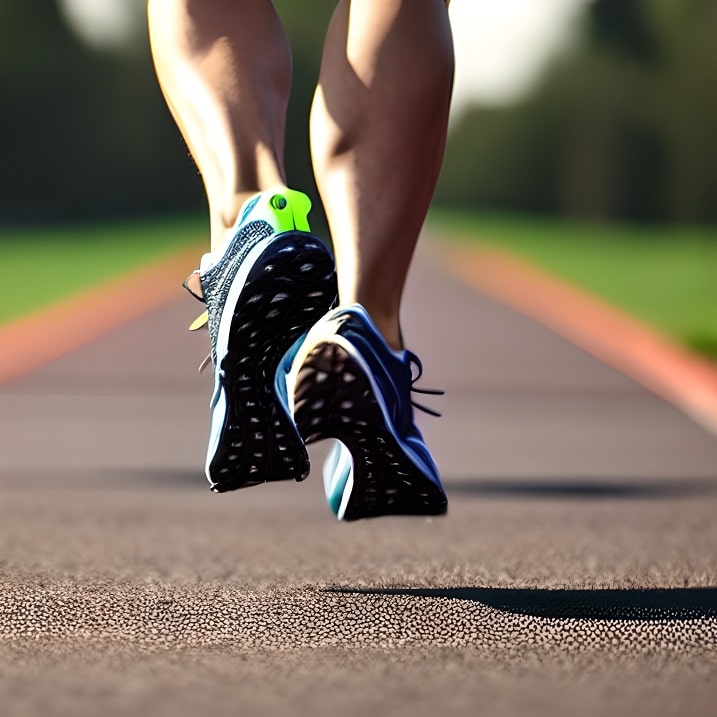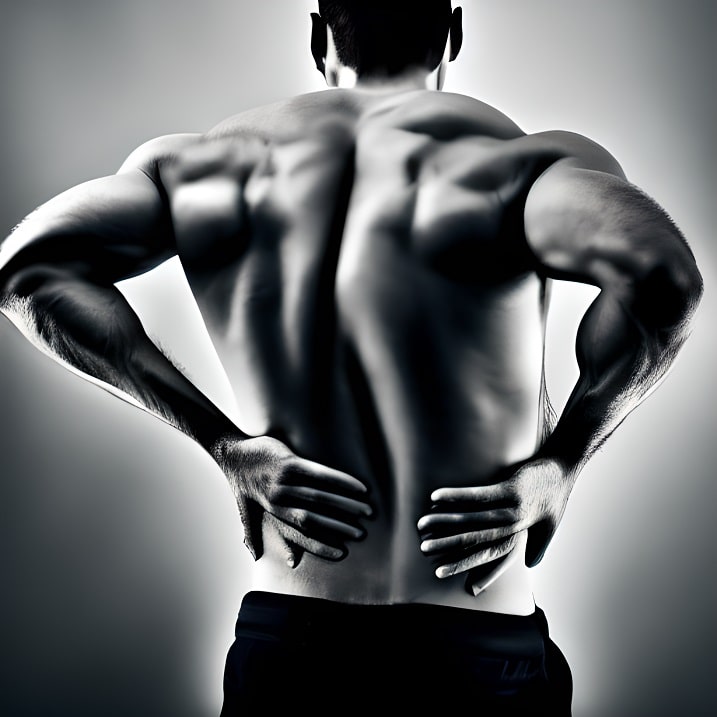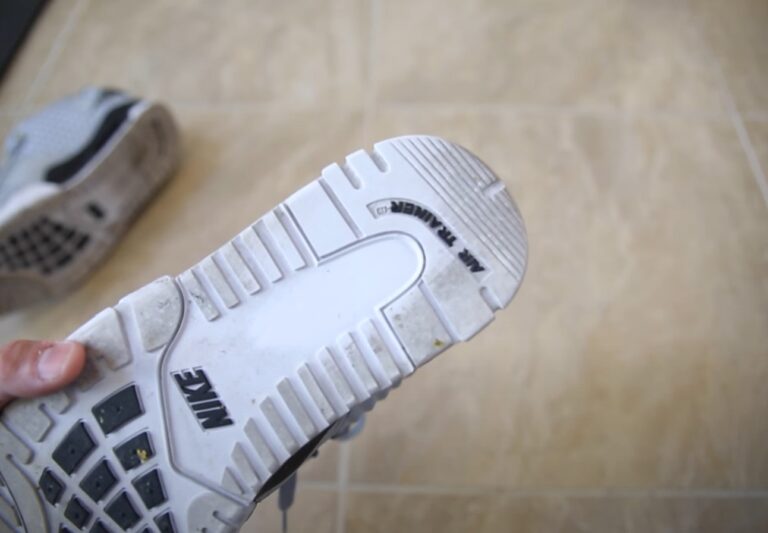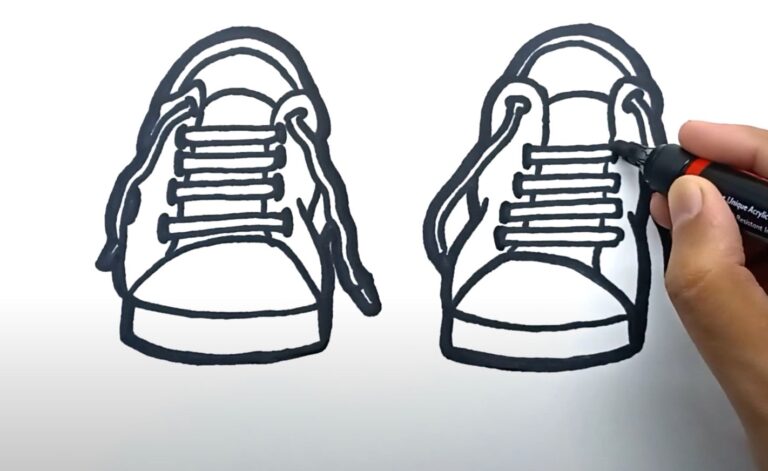WHAT IS ZERO DROP RUNNING SHOES? Ultimate Guide
Zero drop running shoes are a type of footwear designed for runners that have a “zero drop” from heel to toe, meaning that the heel and forefoot are at the same distance from the ground. This design is intended to promote a more natural running style and to reduce the risk of injury by allowing for a more even distribution of impact forces throughout the foot. Zero drop shoes are popular among runners who prefer a more minimalist or barefoot-like running experience, as they allow for greater proprioception and a more natural feeling stride. They are also often used by runners who want to improve their form or who have had injuries related to traditional running shoes. However, it is important to note that zero drop shoes may not be suitable for all runners, particularly those with existing foot or leg conditions.
How zero drop shoes differ from traditional running shoes?
Zero drop shoes differ from traditional running shoes in several key ways:
Heel-to-toe drop: The main difference between zero drop shoes and traditional running shoes is the heel-to-toe drop, which refers to the difference in height between the heel and the forefoot. Traditional running shoes typically have a heel-to-toe drop of around 12mm, which means that the heel is 12mm higher than the forefoot. In contrast, zero drop shoes have a heel-to-toe drop of zero, meaning that the heel and forefoot are at the same distance from the ground.
Foot Strike: Traditional running shoes encourage a heel-strike, which is when the heel makes contact with the ground first. This can lead to over-striding, which is when the foot lands in front of the body, and can increase the risk of injury. Zero drop shoes promote a more natural foot strike, which allows the foot to land more flatly and can reduce the risk of injury.
Cushioning: Traditional running shoes often have a lot of cushioning in the heel to absorb impact. This can make the shoe feel softer and more comfortable to run in, but can also reduce the amount of feedback the runner gets from the ground, which can lead to a less efficient stride. Zero drop shoes typically have less cushioning, which can provide a more natural running experience.
Support: Traditional running shoes often have a lot of support in the heel, which can help to stabilize the foot and reduce the risk of injury. Zero drop shoes typically have less support, which can provide a more natural running experience, but also can increase the risk of injury if the foot is not strong enough.
Weight: Zero drop shoes tend to be lighter than traditional running shoes because they typically have less cushioning and support. This can make them feel more responsive and help the runner to run more efficiently.
What drop is best for running shoes?
When it comes to finding the perfect running shoes, determining what drop is best for you can be a daunting task. Zero drop shoes are becoming increasingly popular amongst athletes as they don’t raise the heel higher than the toe, giving runners an increased sense of balance and stability.
Zero drop shoes also can offer more natural foot motion and promote a midfoot strike which helps reduce injury risk. Additionally, they often have lightweight cushioning and flexible soles which help optimize performance by allowing you to move freely in your stride.
Ultimately, zero drop is a great option for runners who prioritize balance and flexibility over extra cushioning or arch support in their footwear. Whether you’re looking for a shoe with minimalistic features or one that provides maximum comfort and protection during long runs, zero drop is always worth considering when shopping around for running shoes.
Choosing the right zero drop running shoe
Choosing the right zero drop running shoe is important for getting the most out of your running experience. Some factors to consider when selecting a zero drop shoe include:
Fit
Make sure the shoe fits well and feels comfortable. It’s also important to select a shoe that provides enough room for your toes to move freely.
Support
Zero drop shoes typically have less support than traditional running shoes, so it’s important to select a shoe that provides enough support for your foot type and running style.
Durability
Consider the quality of the shoe and its ability to withstand the wear and tear of running. Look for shoes with durable materials and good traction.
Flexibility
Zero drop shoes should be flexible enough to allow the foot to move naturally. This is especially important for runners who are looking to improve their form.
Purpose of use
Consider the type of running you will be doing and select a shoe that is designed for that purpose. For example, if you will be running on trails, you will need a shoe with more traction and durability than if you were running on road.
It’s also a good idea to try on multiple shoes and to consult with a professional, such as a doctor or a sports shoe specialist, before making a final decision.
Benefits of zero drop shoes for runners, such as natural running style and reduced injury risk

Natural Running Style
Zero drop shoes promote a more natural running style by allowing for a more even distribution of impact forces throughout the foot. This can lead to a more efficient stride and reduce the risk of injury by minimizing the stress on the joints and muscles.
Reduced Injury Risk
By allowing for a more natural foot strike, zero drop shoes can reduce the risk of common running injuries such as shin splints, plantar fasciitis and stress fractures. The lack of a heel lift in zero drop shoes also strengthens the muscles in the feet and lower legs, which can further reduce the risk of injury.
Improved Proprioception
Zero drop shoes allows for greater proprioception which is the ability to sense the position and movement of the body and its parts. By allowing the foot to land and move more naturally, zero drop shoes can help to improve balance and stability, which can reduce the risk of falls and other accidents.
Better Form
Zero drop shoes can also help to improve running form by promoting a more natural foot strike. This can help to reduce over-striding, which can lead to an inefficient stride and increase the risk of injury.
Minimalist Feel
Zero drop shoes provide a more minimalist feel, which can be preferred by some runners, this can help to provide a more natural running experience by allowing the foot to move more freely.
Are there certain people who can benefit the most from wearing zero drop running shoes?
Zero drop running shoes are shoes that have the same thickness of sole under the heel and the ball of the foot. While everyone can potentially benefit from wearing zero drop running shoes, there are some people who may benefit more than others:
- Runners with strong feet and lower leg muscles: Zero drop shoes can help strengthen the muscles in the feet and lower legs, and runners who already have strong feet and lower leg muscles may find that zero drop shoes help them maintain their strength and stability while running.
- People who want to improve their running form: Zero drop shoes can help encourage a more natural running gait by promoting a midfoot or forefoot strike rather than a heel strike. This can help reduce the impact on the joints and potentially reduce the risk of injury.
- People with flat feet or overpronation: Zero drop shoes can help improve the alignment of the foot, ankle, and leg, which can benefit people with flat feet or overpronation. However, it’s important to note that some people with these conditions may need additional support or cushioning, so it’s always best to consult with a healthcare professional or a qualified running shoe expert before making any changes to your footwear.
- People with a neutral foot type: People with a neutral foot type, who do not have flat feet or overpronation, may also benefit from zero drop shoes. They can provide a more natural and comfortable fit, and may help improve balance and stability while running.
It’s important to note that not everyone will benefit from wearing zero drop running shoes, and some people may experience discomfort or pain when making the switch. It’s always best to try on several different types of running shoes and consult with a qualified running shoe expert to find the best option for your specific needs and goals.
What are the pros and cons of zero drop?
Here are some of the pros and cons of zero drop shoes:
Pros:
- Encourages a natural running gait: Zero drop shoes promote a midfoot or forefoot strike, which can help reduce the impact on the joints and promote a more natural running gait.
- Improves alignment: Zero drop shoes can help improve the alignment of the foot, ankle, and leg, which can benefit people with flat feet or overpronation.
- Strengthens foot and leg muscles: Zero drop shoes can help strengthen the muscles in the feet and lower legs, which can improve overall foot health and stability.
- More comfortable: Zero drop shoes can provide a more natural and comfortable fit, particularly for people with wider feet or those who prefer a more minimalist shoe.
Cons:
- Requires an adjustment period: The transition to zero drop shoes can take time, as the foot and leg muscles may need time to adapt to the new running gait.
- May not provide enough cushioning: Some people may find that zero drop shoes do not provide enough cushioning, particularly for longer distances or on hard surfaces.
- Not suitable for everyone: Some people with certain foot conditions, such as high arches, may require more support or cushioning than zero drop shoes provide.
- May increase risk of injury: For some people, the change in running gait and the lack of cushioning in zero drop shoes can increase the risk of injury, particularly if they are not used to running in this type of shoe.
Overall, zero drop shoes can be beneficial for some runners, particularly those with strong foot and leg muscles, a neutral foot type, or those looking to improve their running form. However, it’s important to consult with a qualified running shoe expert to determine if zero drop shoes are the right fit for your individual needs and goals.
Can zero drop shoes cause back pain?

It is possible that zero drop shoes may cause back pain for some individuals. This is because zero drop shoes place the foot in a more neutral position, which can cause the muscles in the lower leg and foot to work harder than they are used to. This can lead to muscle strain or fatigue, which can in turn cause pain in the lower back. Additionally, some people may experience pain due to the lack of arch support in zero drop shoes.
It’s important to note that every individual is different and have different needs, it’s recommended that people who have back pain or have a history of back pain should consult with a doctor or physical therapist before switching to zero drop shoes or any other type of shoes.
It’s also important to remember that transitioning to zero drop shoes should be done gradually, so the muscles and tendons have time to adjust and adapt to the new shoe design. Starting with shorter runs and gradually increasing mileage over time can help prevent injury or pain.
FAQs
Q: Is Zero drop good for your feet?
A: The benefits of zero drop shoes for your feet can vary depending on your individual needs and preferences. However, zero drop shoes can help promote a more natural running gait by encouraging a midfoot or forefoot strike, which can reduce the impact on the joints and potentially reduce the risk of injury.
Zero drop shoes can also help improve the alignment of the foot, ankle, and leg, which can benefit people with flat feet or overpronation. Additionally, zero drop shoes can help strengthen the muscles in the feet and lower legs, which can improve overall foot health and stability.
However, it’s important to note that not everyone will benefit from wearing zero drop shoes, and some people may experience discomfort or pain when making the switch. It’s important to consult with a qualified running shoe expert to find the best option for your specific needs and goals, and to gradually transition to zero drop shoes to allow your feet and legs to adapt. Overall, zero drop shoes can be good for your feet if they are the right fit for your individual needs and goals.
Q: Are zero drop shoes better for knees?
A: Zero drop shoes have become increasingly popular in recent years, as they offer a range of benefits for runners. These shoes feature a sole that is completely flat from heel to toe, which helps promote a more natural running gait and encourages the use of proper form. This can reduce the strain on your knees, as it eliminates any unnatural pressure points that are caused by traditional running shoes with elevated heels.
Additionally, zero drop shoes help you keep your weight evenly distributed across your feet. This helps reduce the impact on your knees when you land after each step, as there is no extra force pushing down from an elevated heel. This can also help prevent injuries such as runner’s knee or IT band syndrome.
Overall, zero drop shoes can be beneficial for runners who want to reduce the amount of strain placed on their knees while running. They provide a more natural running experience and help distribute your weight evenly across both feet to minimize impact on your knees.
Q: Can Zero-Drop shoes cause leg pain?
A: Yes, zero-drop shoes can cause leg pain. This is because the heel of the shoe is completely flat, which means that the foot does not have enough cushioning to absorb shock and impact when walking or running. As a result, this can put extra strain on the feet, ankles, knees, and hips which can lead to pain and discomfort. Additionally, since the heel is so low to the ground it can also cause an imbalance in posture which can lead to further pain in other areas of the body. To avoid this, it’s important to make sure you are wearing shoes with adequate cushioning and arch support as well as taking regular breaks from high-impact activities like running.
Q: Are Skechers shoes zero-drop?
A: Skechers shoes vary in terms of their drop. Some models do have a zero-drop, meaning that the heel and forefoot are at the same height. This type of shoe is designed to encourage a more natural foot strike while running or walking. Examples of Skechers zero-drop shoes include the GOrun Razor 3 Hyper and the GOrun Ride 8 Hyper.
Other Skechers shoes, however, do not have a zero-drop design. These styles are usually more cushioned and designed with extra support for activities like running and walking. Examples of these types of shoes include the GOwalk 5 Apprize and the Afterburn M Fit Strike On sneaker.
So it really depends on which model you choose when shopping for Skechers shoes. If you’re looking for a zero-drop design, be sure to check out the specific product details before making your purchase.
Zero drop shoes have become increasingly popular in recent years, as they offer a range of benefits for runners. These shoes feature a sole that is completely flat from heel to toe, which helps promote a more natural running gait and encourages the use of proper form. This can reduce the strain on your knees, as it eliminates any unnatural pressure points that are caused by traditional running shoes with elevated heels.
Additionally, zero drop shoes help you keep your weight evenly distributed across your feet. This helps reduce the impact on your knees when you land after each step, as there is no extra force pushing down from an elevated heel. This can also help prevent injuries such as runner’s knee or IT band syndrome.
Overall, zero drop shoes can be beneficial for runners who want to reduce the amount of strain placed on their knees while running. They provide a more natural running experience and help distribute your weight evenly across both feet to minimize impact on your knees.







